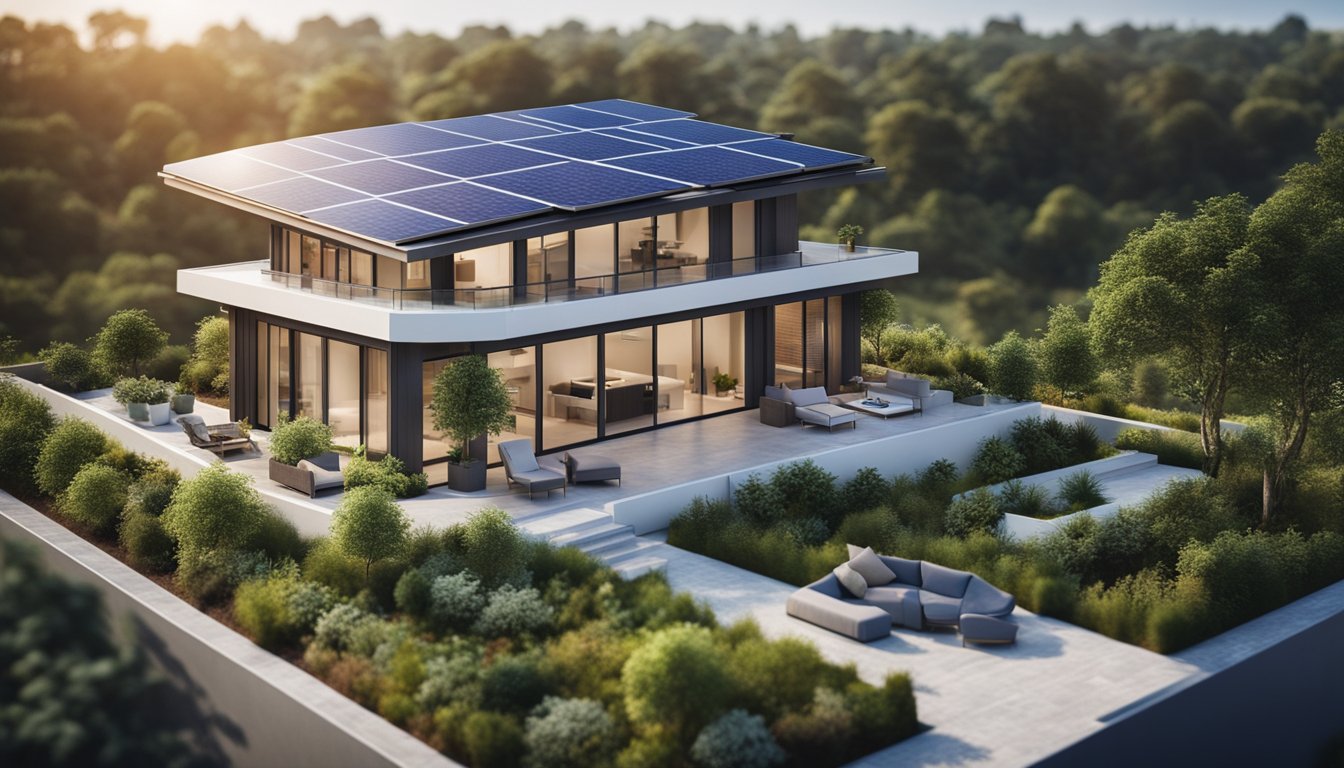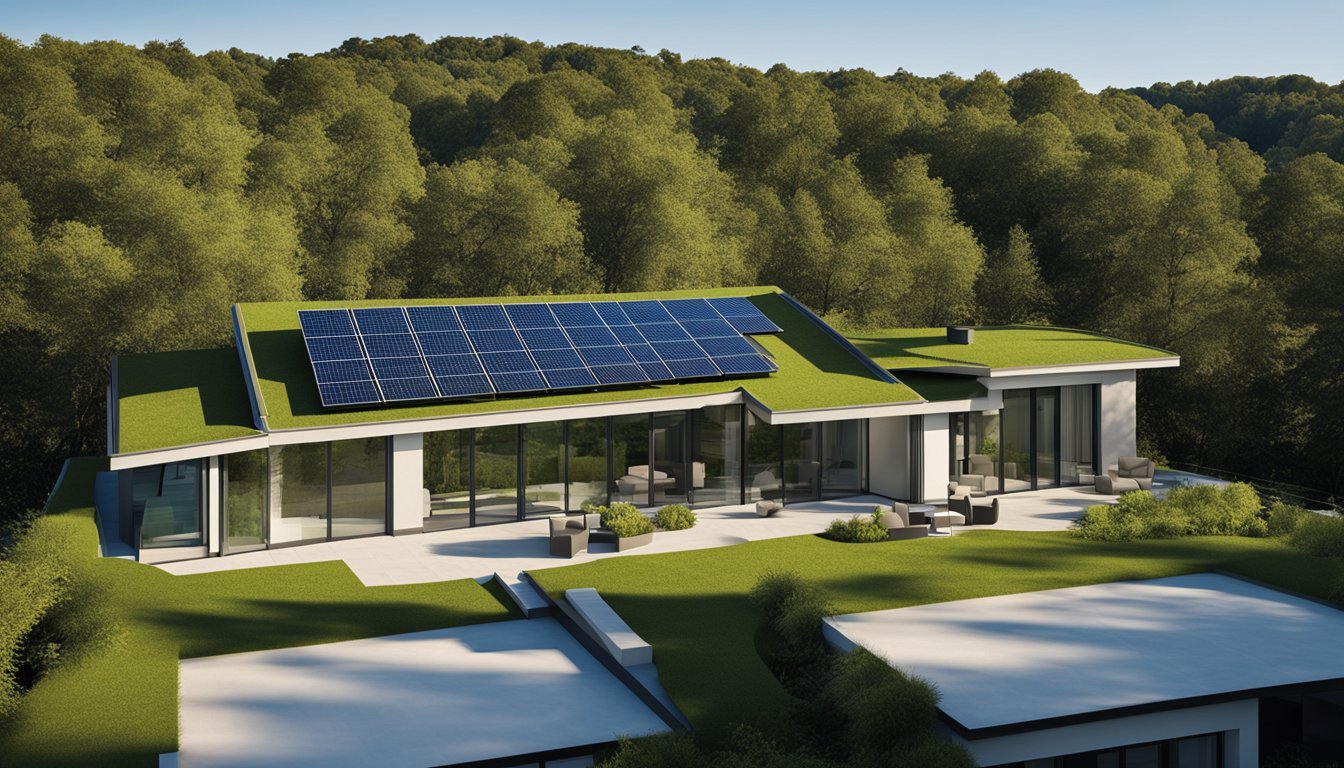Late updated: 25 Jul 2024 13:07
Written by: Oliver Bennett
Latest Eco-Friendly Roofing Trends For 2024: Sustainable Innovations and Materials
As we move into 2024, the push towards sustainable living continues to impact various industries, including roofing. Homeowners and builders alike are seeking out eco-friendly options that not only reduce environmental impact but also offer practical benefits. Energy-efficient roofing materials and smart technologies are at the forefront of this revolution, actively promoting a greener planet while providing modern aesthetic appeal.

From stylish solar tiles to green roofs that blend nature with architecture, the choices available today are both innovative and functional. The implementation of these sustainable options helps to lower energy consumption and costs, while also improving the durability and longevity of roofing systems. It's a win-win for those looking to make environmentally responsible decisions.
Sustainable roofing goes beyond just materials—technology is playing a crucial role too. Advances such as smart roofing systems allow for better energy management and real-time monitoring, making it easier than ever to maintain an eco-friendly home. By adopting these new trends, we can all contribute to a more sustainable future.
Key Takeaways
- Eco-friendly roofing materials and technologies are on the rise in 2024.
- Sustainable options reduce energy costs and enhance durability.
- Smart roofing systems improve energy management and home maintenance.
Sustainable Materials and Technologies in Roofing
In 2024, the roofing industry continues to innovate with eco-friendly materials and advanced technologies. Emphasis is being placed on solutions that enhance sustainability, energy efficiency, and durability, all while addressing climate change concerns.
Advancements in Green Roofing
Green roofs are gaining traction due to their environmental benefits and aesthetic appeal. By integrating vegetation on rooftops, we can combat urban heat islands and improve air quality.
Modern green roofs utilise lightweight, water-retention layers and root barriers to ensure longevity. Recycled materials for growing mediums and drought-resistant plant species also enhance sustainability. These roofs provide insulation, reducing the need for heating and cooling, which cuts down on energy consumption.
Metal Roofing: Combining Durability with Sustainability
Metal roofing stands out for its long lifespan and recyclable nature. Aluminium and steel roofs are particularly favoured since they can last over 50 years with minimal upkeep.
Energy-efficient coatings on metal roofs reflect sunlight, diminishing the heat island effect. These roofs are often made from a significant percentage of recycled materials, making them an eco-friendly option. Additionally, at the end of their life cycle, metal roofs can be recycled, reducing landfill waste.
Solar Roof Innovations: Beyond Traditional Panels
Solar roofing solutions have evolved far beyond traditional panels. Innovations like solar shingles and solar tiles are blending seamlessly with conventional roofing materials, offering an aesthetically pleasing alternative.
Solar shingles are designed to look like traditional asphalt shingles while generating electricity. Solar tiles can be integrated into various roofing styles and materials. These solutions not only provide clean energy but also contribute to an energy-efficient roof. By harnessing sunlight, they help reduce our dependence on fossil fuels, thereby mitigating the impact on the environment.
Investments in these technologies make homes and buildings more sustainable, efficient, and environmentally friendly.
Practical Implementation and Performance

In 2024, eco-friendly roofing trends focus on enhancing weather resistance, energy efficiency, and incorporating smart technology to maximise functionality. This involves practical measures that make roofs more resilient and cost-effective.
Weather Resistance and Energy Efficiency
Durable roofing materials play a crucial role in weather resistance. Using reflective surfaces, cool roofs help mitigate the urban heat island effect by reflecting more sunlight and absorbing less heat. This results in lower indoor temperatures and reduced energy bills.
In regions prone to extreme weather events, resilient materials like metal can withstand heavy rain, wind, and hail. The insulation properties of sustainable materials contribute to maintaining stable indoor temperatures, thus enhancing energy efficiency. We can see these advancements driving roofing trends towards sustainable, low-maintenance alternatives.
Smart Roofing Technology: Enhancing Functionality and Efficiency
Integrating smart roofing systems into homes provides a host of benefits. These systems often include smart sensors that monitor weather conditions and the roof's performance. For instance, sensors can detect leaks or structural weaknesses early, allowing for prompt maintenance and extending the roof's lifespan.
Moreover, smart technologies can optimise energy savings by adjusting insulation or using adaptive materials that respond to environmental changes. Coupled with solar roofing solutions, these systems can significantly reduce household energy consumption, making them a cost-effective choice. The shift towards smart, eco-friendly roofs represents a leap in sustainable practices and roofing efficiency.
Frequently Asked Questions

As we navigate the evolving landscape of eco-friendly roofing in 2024, it becomes crucial to understand the materials, designs, and benefits that are reshaping the industry.
Which roofing materials are currently leading in environmental sustainability?
Metal roofs, especially those made from recycled materials, are popular. They offer longevity and efficiency. Additionally, solar shingles and tiles are gaining traction, converting sunlight into energy while blending seamlessly with traditional roof aesthetics. Green roofs, with vegetation cover, reduce urban heat islands and provide insulation.
How can roofing contribute to energy efficiency in homes?
Reflective coatings and cool roofs minimize heat absorption, reducing the need for air conditioning. Solar-integrated roofs generate electricity, lowering utility bills. Insulated roofing materials retain heat during winter and keep interiors cool in summer, thereby enhancing overall energy efficiency of homes.
What advancements have been made in recyclable roofing materials?
Recent advancements mean many roofing materials can now be recycled at the end of their life. Metal roofs are particularly noteworthy, as they can be repurposed into new products. Asphalt shingles with recycled content are also emerging, helping to divert waste away from landfills.
Are there any innovative designs in roofing that promote better rainwater harvesting?
Some roofing designs now include integrated rainwater collection systems. Sloping green roofs allow water to funnel into collection points. Permeable roofing materials let water seep through to storage systems. These innovations help in sustainable water management, especially in urban areas.
How do green roofs contribute to urban biodiversity and thermal regulation?
Green roofs create habitats for various flora and fauna, promoting biodiversity in city environments. They act as thermal insulators, reducing the energy needed for heating and cooling. By absorbing rainwater and releasing it slowly, they also mitigate the risk of urban flooding.
What are the long-term benefits of installing an eco-friendly roof?
Eco-friendly roofs often have longer lifespans, reducing replacement costs. They contribute to lower energy bills through better insulation and solar energy generation. Moreover, they enhance property value and offer environmental benefits like reduced carbon footprint and enhanced urban green spaces.
